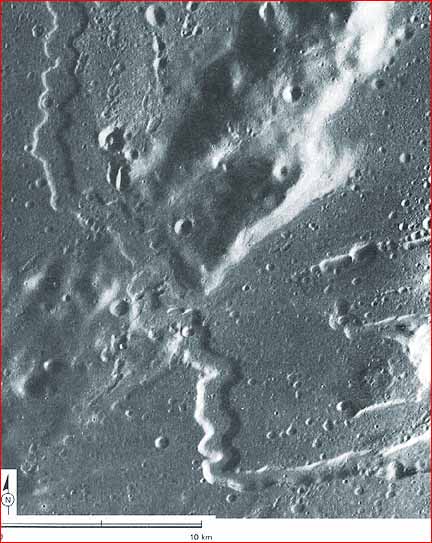|
|
||
 Credit: NASA/APOLLO |
||
|
pic of the day Links:
Society for
|
Nov 18, 2004 A rille is an electrical erosion channel that occurs on the cathode surface. As two charged bodies approach, the field strength increases on high ground, particularly where there are sharp edges such as cliffs, mountaintops and existing crater walls. When the electric field becomes strong enough on the cathode to begin tearing electrons from the surface, local coronal arcing begins. Breakdown streamers snake along and through the ground at lightning speed, following the local electric field. This below- surface lightning causes explosive heating, which blasts a huge channel and hurls the debris to either side, often forming levees. The tortuous path of the underground leader may leave a narrower, more sinuous channel in the floor of a larger flat-bottomed furrow. The tip of the lightning leader responds only to the local electric field and is heedless of topography. There are several instances on the Moon where a rille has punched through mountains to reach the main discharge. Two fine examples are the 8 km wide Alpine Valley, which runs for 150 kilometres to Mare Imbrium through mountains rising to 3,000 metres; and Rima Prinz 2 (see photo above), where it cuts through the Marius Hills--the largest group of "volcanic" cones and domes on the Moon. At intervals along the channel electrons may follow an intensifying vertical electric field and send "lightning leaders" toward space. The leaders are filamentary discharges that may create on channel craters or scalloped channel cliffs as ionized material follows them upwards. Overlapping chains of such craters may produce a pitted channel with scalloped edges. The leaders will stream to form the main discharge channel, inviting a powerful return stroke. The return stroke will blast a circular crater and may terminate the channel.
|
|
|
Copyright 2004: thunderbolts.info |
||
